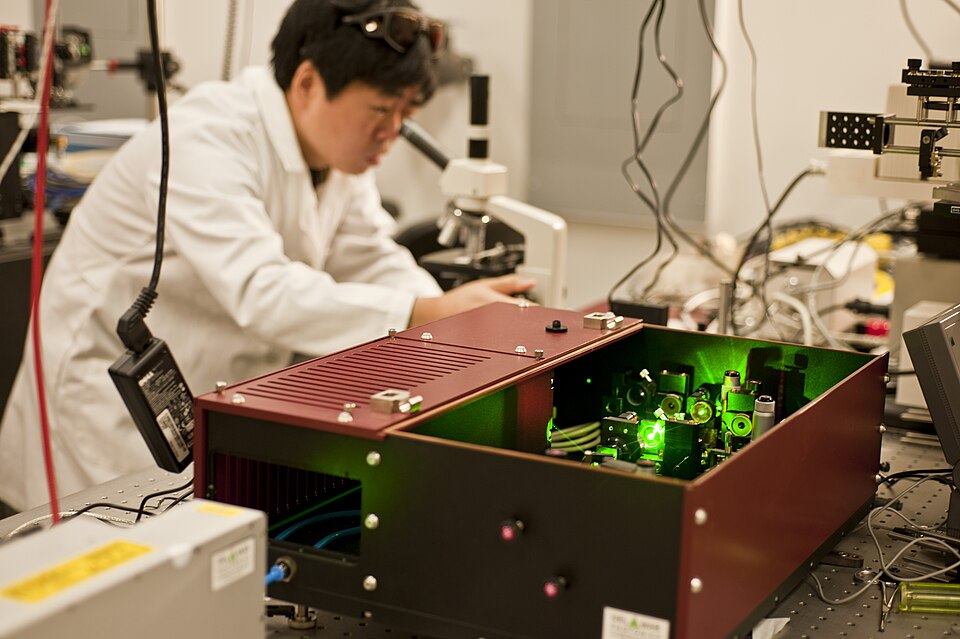Revolutionary Optical Microscope Achieves One-Nanometer Resolution

In a significant advancement in the field of microscopy, researchers have developed a groundbreaking optical microscope that can achieve atomic-scale detail with unprecedented one-nanometer precision. This innovation, known as Ultralow Tip Oscillation Amplitude Scattering-Type Near-Field Optical Microscopy (ULA-SNOM), enables scientists to visualize single atoms and their interactions with light, a feat previously attainable only through electron microscopy techniques.
The research team, comprised of international scientists, employed a silver scanning tip that operates under ultra-high vacuum and extreme cold conditions to enhance the resolution capabilities of traditional optical microscopy. As stated by Dr. Emily Tran, a physicist at the Massachusetts Institute of Technology and co-author of the study published in *Science Advances* on July 19, 2025, "This technique pushes the boundaries of optical resolution, breaking through the diffraction limit that has historically constrained our ability to observe atomic structures."
Historically, optical microscopes have struggled to resolve details smaller than approximately 200 nanometers due to the diffraction limit, which arises from the wave nature of light. This limitation has hindered progress in material science, electronics, and quantum research, as understanding light's interaction with individual atoms is crucial for these fields. The ULA-SNOM method overcomes this hurdle by utilizing a finely tuned silver tip that oscillates with an amplitude of only 0.5 to 1 nanometer, allowing it to pick up optical signals with remarkable clarity while minimizing noise interference.
The team implemented an innovative approach by creating a plasmonic cavity—a confined pocket of light—between the silver tip and the sample surface, measuring less than a cubic nanometer in volume. The precise positioning of the tip was maintained at a nanometer height above the sample to capture the minute details of atomic interactions without contamination or vibrations, thanks to the ultra-cold environment maintained at eight Kelvin (-265°C).
In practical applications, the ULA-SNOM was tested on single-atom-thick silicon islands on a silver substrate. The microscope not only delineated the boundaries of the silicon and silver but also illustrated how each material interacted with light, providing dual information regarding optical behavior and structural integrity. This capability to gather simultaneous data on optical signals, electrical conductivity, and mechanical forces marks a significant step forward in microscopy.
According to Professor James Wang, an optical engineering expert at Stanford University, "The implications of this technology extend far beyond mere imaging. It could lead to advancements in the design of nanostructures used in electronics, the discovery of new photonic materials, and potentially even improvements in solar cell efficiency."
However, the ULA-SNOM technique comes with its challenges. The need for cryogenic cooling, vacuum conditions, and specialized equipment means that this technology is currently limited to well-equipped research laboratories. Future developments may focus on making this technique more accessible to a broader range of researchers.
The publication of this study in *Science Advances* highlights a pivotal moment in optical microscopy, promising to reshape our understanding of material properties at the atomic level. As researchers continue to explore the potential of ULA-SNOM, the scientific community anticipates breakthroughs that could redefine multiple disciplines, including quantum physics and nanoscale engineering.
In summary, the ULA-SNOM technique represents a transformative leap in our ability to observe and understand the atomic world, paving the way for a new era of scientific discovery and technological advancement. As Dr. Tran aptly noted, "We are on the cusp of a new era in microscopy that will allow us to see beyond traditional limits and into the very essence of matter."
Advertisement
Tags
Advertisement





